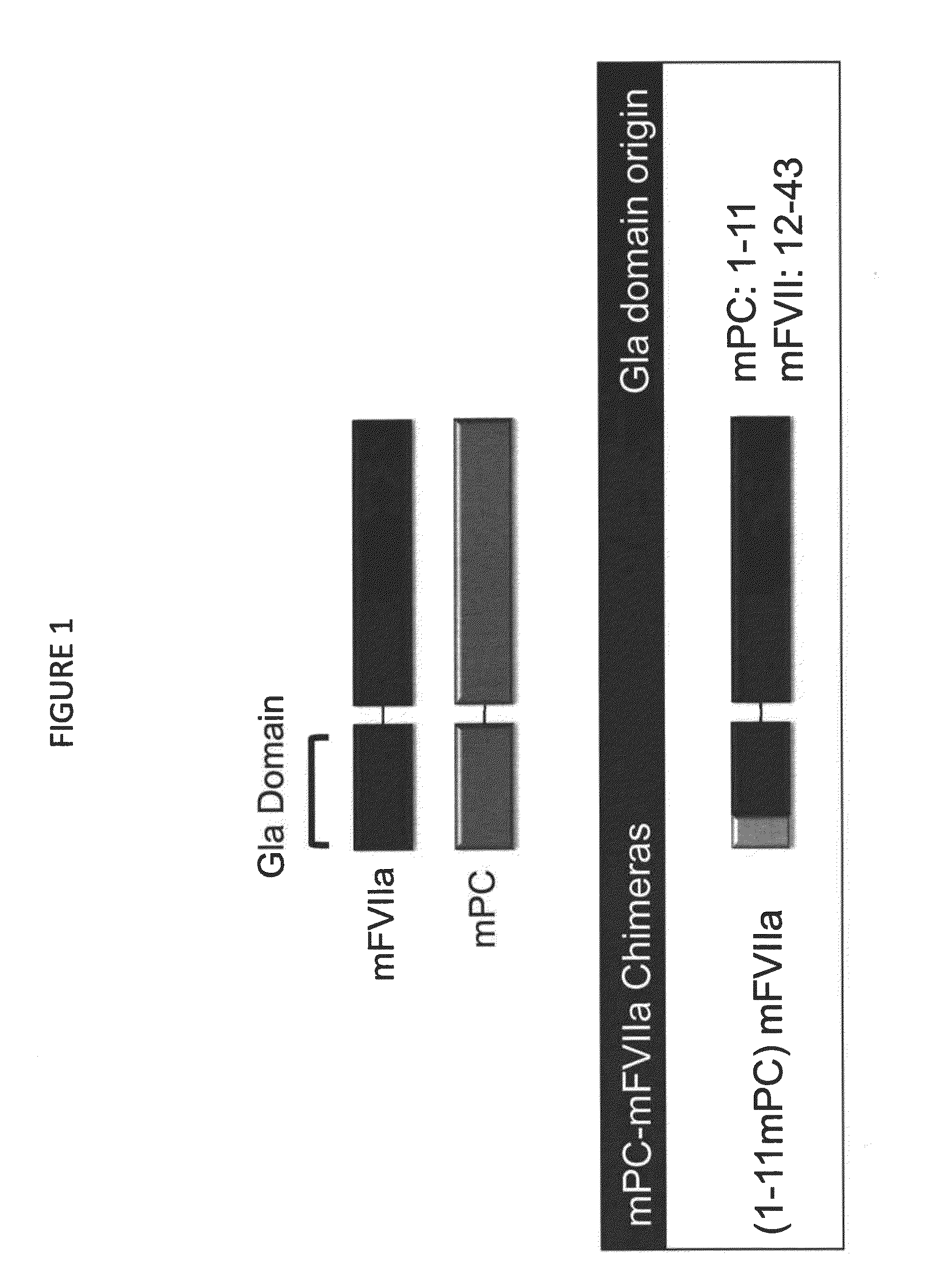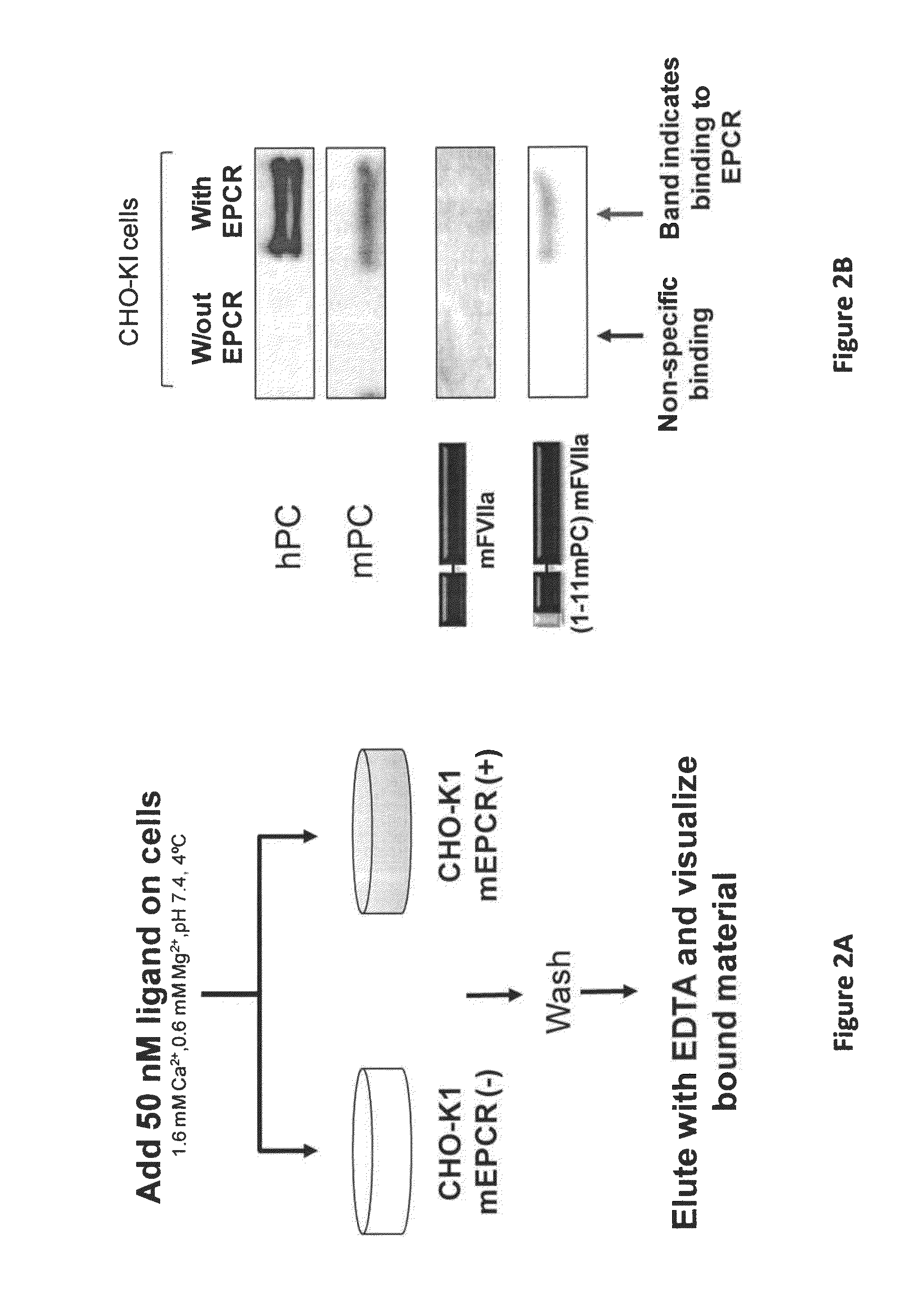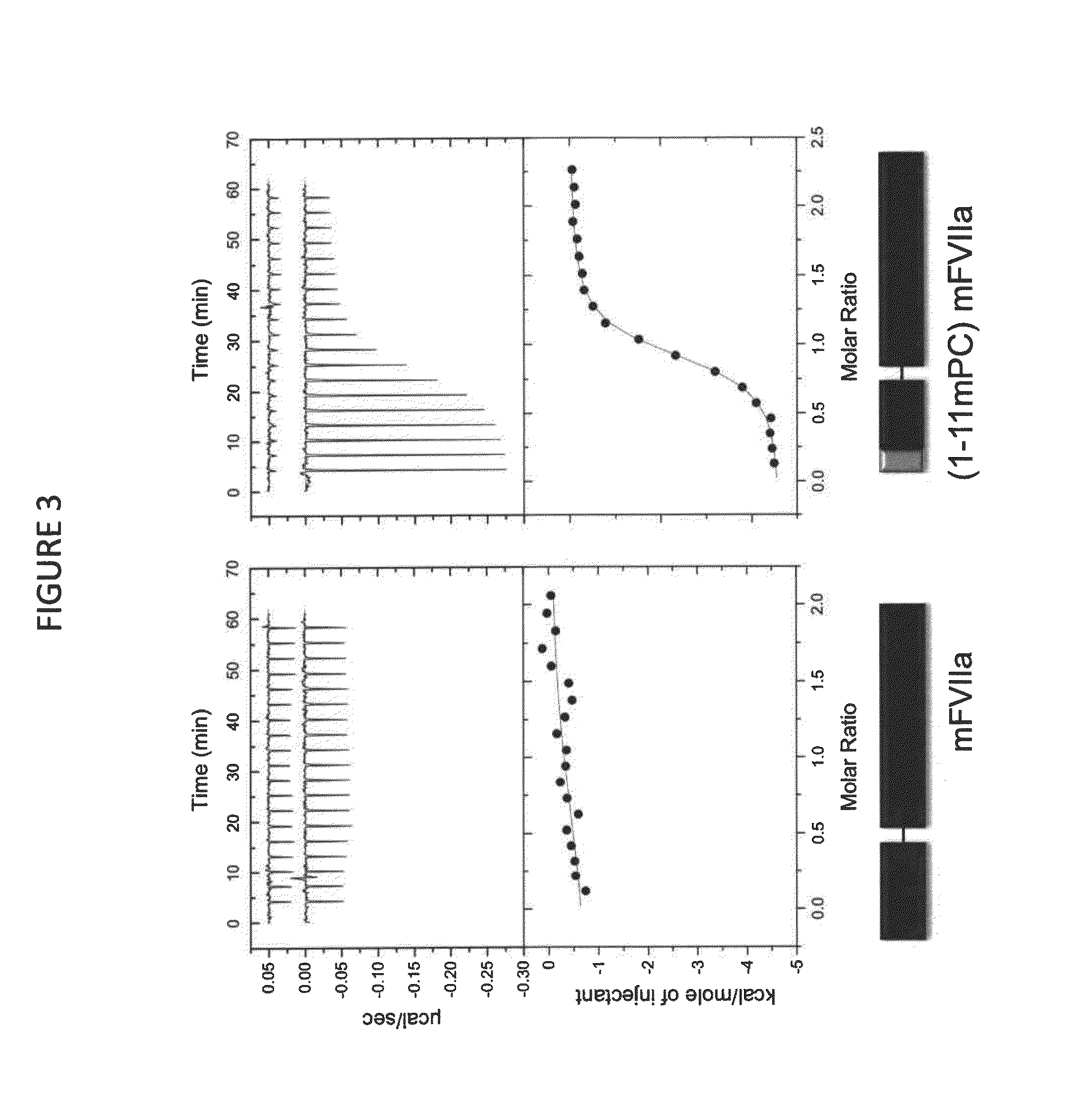FVII Polypeptide Variants Exhibiting Altered Interaction with Endothelial Protein C Receptor (EPCR) and Methods of Use Thereof for Modulating Hemostasis
a polypeptide and endothelial protein c receptor technology, applied in the field of medicine and hematology, can solve the problems of short circulating time and enormous treatment cost increase, and achieve the effects of improving treatment activity, improving therapeutic activity, and improving epcr binding capacity
- Summary
- Abstract
- Description
- Claims
- Application Information
AI Technical Summary
Benefits of technology
Problems solved by technology
Method used
Image
Examples
example i
Modulation of FVIIa interaction with endothelial protein C receptor as means to improve the hemostatic effects of FVIIa
[0081]The mode of action of high dose rFVIIa is not well understood but it involves multiple cellular as well as protein components of the coagulation system. Under therapeutic protein administration, activated FVII (FVIIa) can directly activate coagulation factor X (generating Factor Xa), resulting in thrombin generation and clot formation. FVIIa's natural cofactor is tissue factor (TF) that, when exposed to the circulation following injury, localizes the FVIIa coagulant reactions. However, the contribution of this pathway in hemophilia following FVIIa treatment is not entirely delineated. On the other hand, FVIIa has also been shown to interact with a cellular receptor (endothelial protein C receptor, EPCR) on the surface of endothelial cells that line blood vessels. The physiological ligand for EPCR, protein C is utilized to boost the anticoagulant protein C path...
PUM
| Property | Measurement | Unit |
|---|---|---|
| Interaction | aaaaa | aaaaa |
Abstract
Description
Claims
Application Information
 Login to View More
Login to View More - R&D
- Intellectual Property
- Life Sciences
- Materials
- Tech Scout
- Unparalleled Data Quality
- Higher Quality Content
- 60% Fewer Hallucinations
Browse by: Latest US Patents, China's latest patents, Technical Efficacy Thesaurus, Application Domain, Technology Topic, Popular Technical Reports.
© 2025 PatSnap. All rights reserved.Legal|Privacy policy|Modern Slavery Act Transparency Statement|Sitemap|About US| Contact US: help@patsnap.com



